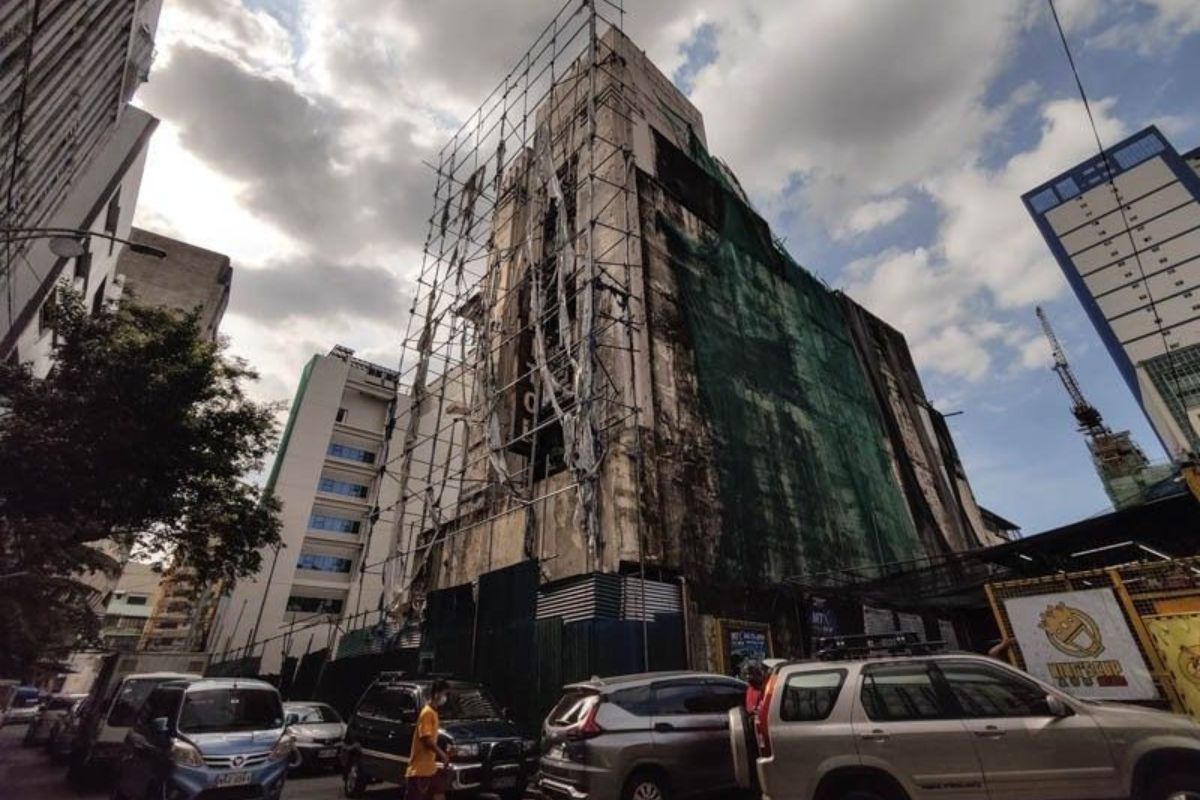Old structures are a testament to a country’s history: how people lived during an era, how an area has evolved, and how the present connects to the past. Unfortunately, many of these buildings that are important to Filipino heritage have fallen into disrepair and eventually been destroyed in the name of development, such as in the case of the Capitol Theater in Escolta, Manila. Last Thursday, the National Commission for Culture and the Arts (NCCA) issued a cease-and-desist order on the demolition of the prewar art deco building, whose façade was supposed to be preserved under a tripartite agreement signed by the NCCA, the National Historical Commission of the Philippines, and the National Museum.
The developer Ascott Resources and Development Corp. (ARDC) received the go-signal to demolish Capitol in 2017, paving the way for the construction of a high-rise residential building. But the parties also agreed that while much of the building was to be torn down, the developer was to “undertake a perfect replication of the existing façade” by retaining the tower relic. Last week, the NCCA received photos showing considerable damage to the tower due to the demolition; the workers and the foreman of the project reasoned out that this was due to safety concerns ~ fearing that hollow blocks above could easily fall off, they decided to “demolish” it. In doing so, NCCA said, the developer violated not only the agreement but also Section 48(a) of Republic Act No. 10066 or the National Cultural Heritage Act of 2009, which considers prohibited acts the destruction, demolition, mutilation, or damage “of any world heritage site, national cultural treasures, important cultural property and archaeological and anthropological sites.”
Advertisement
RA 10066 protects, preserves, conserves, and promotes buildings that were designed by a National Artist or are over 50 years, considering them as “important cultural property.” Yet this law has previously failed to protect other heritage buildings such as the Admiral Hotel (demolished: 2014), the old Philippine National Bank building (demolished: 2016), and the wooden art deco school Philippine Su Kuang Institute building (demolished: 2017) that were all torn down because they were deemed structurally unsound. It was the 2000 demolition of the Jai-Alai Building, once considered the finest art deco building in Asia, that prompted the passage of RA 10066. Capitol’s façade, which is now subject to the NCCA order, has bas-relief sculptures of two women: one holding a mask to represent theater, and one holding a lyre to represent music.
The theater was built in 1935 and designed by National Artist Juan F. Nakpil de Jesús in the art deco style prevalent in the 1920s and 1930s. During its time, Capitol was considered one of Manila’s most modern theaters that had 800 seats, a curving staircase, and double balconies where Filipinos experienced watching local and foreign films, and live performances, for the first time. Another similar structure, the Life Theater in Quiapo, designed by National Artist Paolo Antonio and now known as the Teofilo Villonco Building, has been repurposed as a parking lot, though its art deco façade has been retained.









